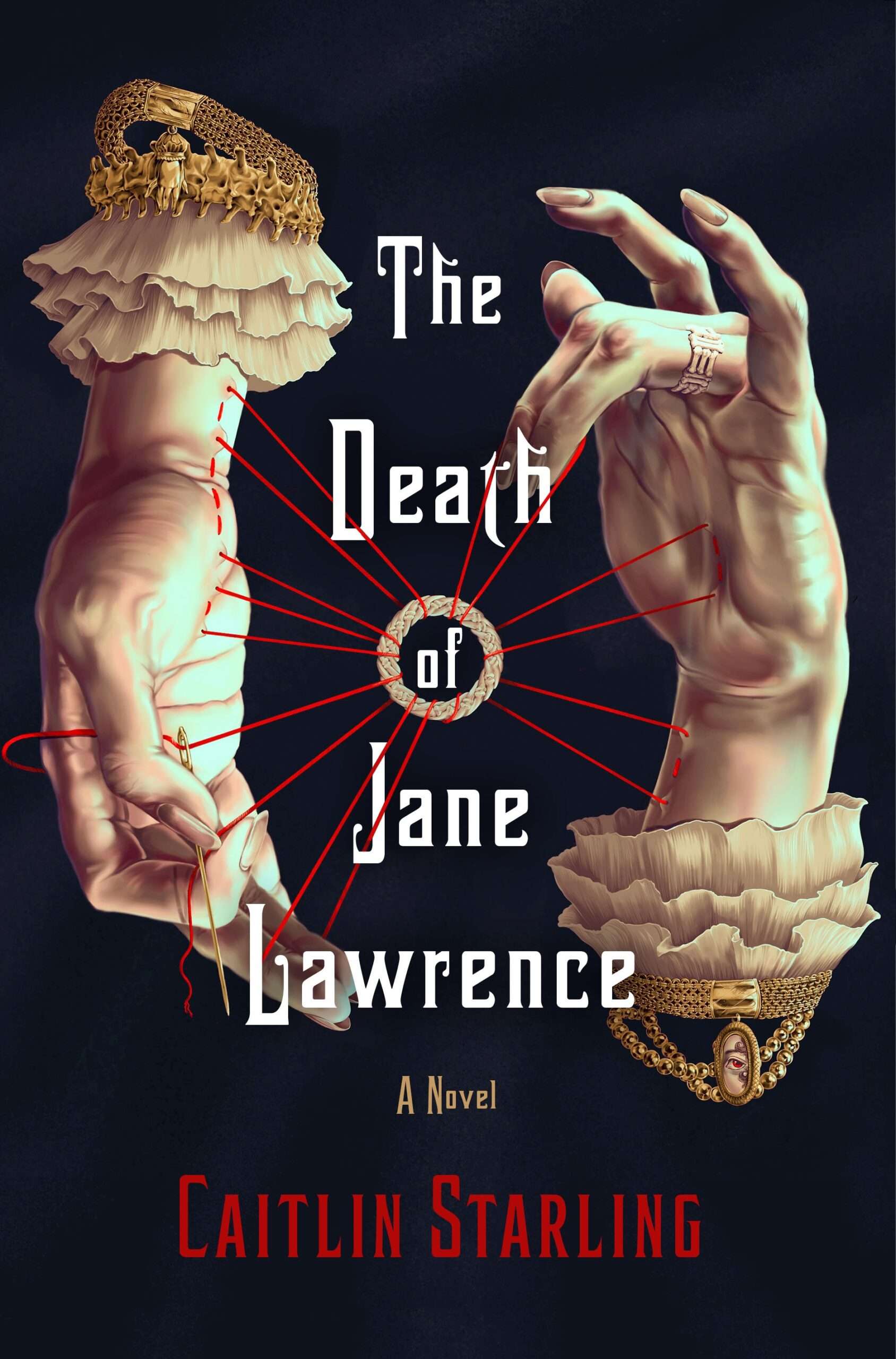THE DEATH OF JANE LAWRENCE by Caitlin Starling
Titan, 450-page p/b, £8.99
Reviewed by Pauline Morgan

The idea of Gothic literature was born in 1764 with the publication of Horace Walpole’s The Castle of Otranto. Since then, the genre has built, so much so that the best need to contain a number of elements (up to ten are often quoted) to qualify. The Death of Jane Lawrence is hailed as a Gothic Novel, and as such, it contains many of these elements.
Jane Shoringfield does not want to return to Camhurst, where her parents died in the recent war. Although this is a fantasy setting, the society is pre-industrial, and the reputation of women needs to be taken into account. Jane conceives of a scheme to marry a man who will agree that this is a marriage of convenience. After drawing up a list of prospective spouses, she puts Dr Augustine Lawrence at the top of the list as having all the qualities she is looking for. In return for his name and the protection of marriage, she will act as an accountant for his practice – Jane’s passion is for numbers. Reluctantly he agrees but has stipulations of his own. She is never to spend the night at his family home. Simple schemes do not always go to plan.
After the wedding, instead of going to the surgery where she expects to live, Jane is taken to Lindridge Hall. Dr Lawrence’s family home is the atmosphere and setting expected in gothicnovels as it is a vast decaying mansion complete with turrets, especially as the heavy rain begins and Jane’s carriage crashes on the way back to town, and she is forced to break the agreement by returning to Lindridge Hall as a damsel in distress. There have already been hints of omens and curses as the staff will not stay in the building overnight. Mystery and fear creep in as Jane occupies her time organising the accounts and finds a reference to a mysterious Elodie. She also has fleeting glimpses of what could be spirits haunting the place. It is only when a group of Augustine’s friends turn up. Led by Dr Georgiana Hint, Jane is persuaded to participate in a magical rite to conjure Elodie’s ghost, precipitating supernatural and paranormal activity and giving her nightmares.
Romance beckons as, despite her intentions to stay aloof, Jane finds herself falling for Augustine, but as in so many of these stories, she has to go through emotional distress, especially after discovering that Elodie was his first wife – a detail he had neglected to mention during their negotiations. Augustine takes the role of the anti-hero as he flees when his friends suggest initiating Jane into their rites. The villain is the magic itself.
The novel itself is engagingly written, but some of the elements are a little contrived. The action takes place over a very short period of time. From the time of their first meeting to marriage is only a week and the events around Lindridge Hall begin on the same day. It all seems very rushed, plunging Jane from incident to incident without a break. What I really don’t understand is why the action takes place in a fictional country. There are plenty of places in Europe or England that would serve as an equally suitable setting that would make the events more unsettling if they were closer to home.
The clarity towards the end does become a little confusing, but overall, there are interesting elements which could have been even better if the timescale had been longer.

